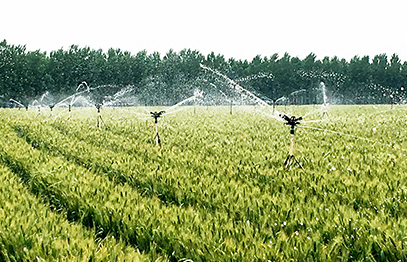Nov . 25, 2024 15:31 Back to list
Understanding Components of Submersible Pump Systems for Enhanced Performance and Maintenance
Understanding Submersible Pump Parts A Comprehensive Guide
Submersible pumps are essential devices widely utilized in various sectors, including agriculture, construction, and wastewater management. These pumps are designed to operate underwater, efficiently moving liquids from one location to another. To ensure optimal performance, understanding the components that make up a submersible pump is crucial. This article will provide an overview of the key parts of submersible pumps and their functions.
1. Motor
At the heart of every submersible pump is the motor, which powers the entire unit. Submersible motors are designed to withstand immersion in water, often featuring a water-cooled design. These motors can be either single-phase or three-phase, depending on the application. The motor's efficiency and durability are critical for the longevity of the pump, as it must operate under varying temperatures and pressures.
2. Impeller
The impeller is one of the most important components of a submersible pump, responsible for transporting fluids. It works by converting rotational energy from the motor into kinetic energy, creating a flow of liquid. The design of the impeller can vary significantly, with choices including open, semi-open, and closed configurations. Each design affects the pump's efficiency, capacity, and suitability for different liquid types, such as clean water or sludge.
3. Diffuser
Following the impeller in the assembly is the diffuser, which guides the flow of liquid from the impeller and helps convert kinetic energy into pressure energy. This component plays a crucial role in ensuring that the fluid is efficiently moved through the pump. Proper diffuser design is vital for minimizing turbulence and enhancing the overall efficiency of the submersible pump.
4. Shaft
submersible pump parts

The shaft connects the motor to the impeller, transferring the motor's rotational energy directly to the impeller. The shaft must be made from durable materials to resist wear and corrosion, as it operates in harsh environments, often submerged in water. Proper alignment and sealing of the shaft are critical to prevent leaks and maintain the pump's integrity.
5. Bearings
Bearings support the rotating shaft, minimizing friction and wear during operation. They are critical for smooth performance and help extend the life of the pump. Different types of bearings, such as radial and thrust bearings, may be used to accommodate axial and radial loads. The choice of bearing materials is also significant, as they need to withstand both water exposure and the mechanical stresses of pumping.
6. Seals
Seals are essential for ensuring that water does not enter the motor area, as any ingress can lead to failure. Many submersible pumps feature mechanical seals that provide a robust barrier against water. The materials used for seals must be compatible with the fluids being pumped and resistant to wear over time. Proper sealing is vital for maintaining pump efficiency and preventing costly repairs.
7. Float Switch
In some applications, submersible pumps are equipped with float switches that automatically turn the pump on or off depending on the water level. This feature is particularly useful in applications like sump pumps, where maintaining a specific water level is crucial. By automating the operation, float switches help prevent overflow and damage to the surrounding area.
Conclusion
Understanding the various parts of a submersible pump is essential for anyone involved in their operation or maintenance. Each component plays a vital role in the pump's overall functionality and efficiency. Regular inspection and proper maintenance of these parts can significantly enhance the performance and lifespan of the pump. Whether for agricultural irrigation, groundwater extraction, or wastewater management, submersible pumps remain indispensable tools that rely heavily on the effective working of their individual components.
-
Submersible Water Pump: The Efficient 'Power Pioneer' of the Underwater World
NewsJul.01,2025
-
Submersible Pond Pump: The Hidden Guardian of Water Landscape Ecology
NewsJul.01,2025
-
Stainless Well Pump: A Reliable and Durable Pumping Main Force
NewsJul.01,2025
-
Stainless Steel Submersible Pump: An Efficient and Versatile Tool for Underwater Operations
NewsJul.01,2025
-
Deep Well Submersible Pump: An Efficient 'Sucker' of Groundwater Sources
NewsJul.01,2025
-
Deep Water Well Pump: An Efficient 'Sucker' of Groundwater Sources
NewsJul.01,2025
-
 Submersible Water Pump: The Efficient 'Power Pioneer' of the Underwater WorldIn the field of hydraulic equipment, the Submersible Water Pump has become the core equipment for underwater operations and water resource transportation due to its unique design and excellent performance.Detail
Submersible Water Pump: The Efficient 'Power Pioneer' of the Underwater WorldIn the field of hydraulic equipment, the Submersible Water Pump has become the core equipment for underwater operations and water resource transportation due to its unique design and excellent performance.Detail -
 Submersible Pond Pump: The Hidden Guardian of Water Landscape EcologyIn courtyard landscapes, ecological ponds, and even small-scale water conservancy projects, there is a silent yet indispensable equipment - the Submersible Pond Pump.Detail
Submersible Pond Pump: The Hidden Guardian of Water Landscape EcologyIn courtyard landscapes, ecological ponds, and even small-scale water conservancy projects, there is a silent yet indispensable equipment - the Submersible Pond Pump.Detail -
 Stainless Well Pump: A Reliable and Durable Pumping Main ForceIn the field of water resource transportation, Stainless Well Pump has become the core equipment for various pumping scenarios with its excellent performance and reliable quality.Detail
Stainless Well Pump: A Reliable and Durable Pumping Main ForceIn the field of water resource transportation, Stainless Well Pump has become the core equipment for various pumping scenarios with its excellent performance and reliable quality.Detail
